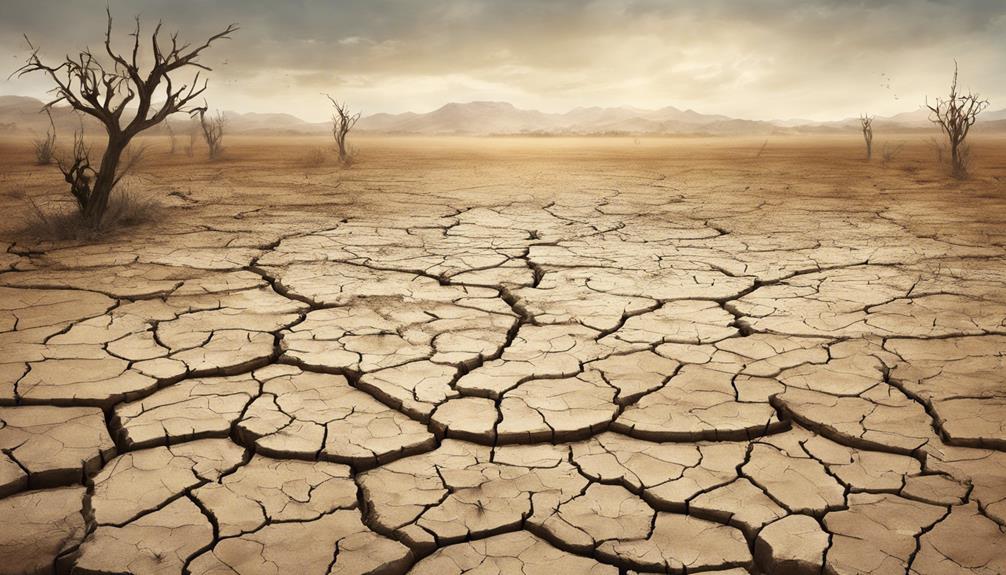A drought, a complex meteorological phenomenon, extends far beyond mere aridity, impacting societies worldwide in multifaceted ways. Understanding the intricate interplay between climatic conditions, human activities, and ecological systems is crucial in comprehending the cascading effects of water scarcity. As we explore the causes, consequences, and strategies associated with drought, a deeper insight into its far-reaching implications emerges, shedding light on the urgency of proactive measures in mitigating its repercussions.
Key Takeaways
- Drought disrupts water supply, causing food shortages and malnutrition.
- Climate change worsens droughts, impacting agriculture and ecosystems.
- Sustainable water management is crucial to mitigate drought impacts.
- Drought affects communities, health systems, and exacerbates inequalities.
Causes of Drought
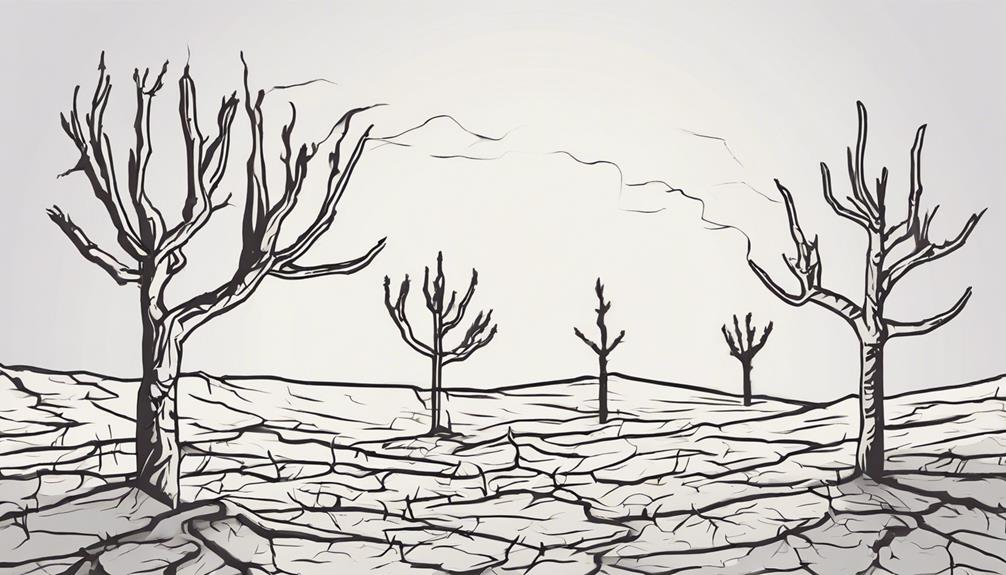
Droughts, characterized by prolonged periods of abnormally low precipitation, arise from a complex interplay of environmental factors that disrupt the delicate balance of water supply and demand. Climate change plays a significant role in the occurrence and severity of droughts. Alterations in rainfall patterns and rising temperatures, attributed to climate change, contribute to the aridity of regions and the prolongation of drought conditions. Deforestation, another key factor, disrupts the water cycle, leading to reduced precipitation levels and further exacerbating drought situations. Moreover, the high demand for water in various sectors such as agriculture and industry intensifies the strain on water sources, ultimately depleting them and contributing to the onset of drought. The intricate relationship between climate change, deforestation, and escalating water demand underscores the necessity of sustainable water management practices to mitigate the impacts of drought on agriculture, water supply, and food security. Understanding these causes is fundamental in developing strategies to address and adapt to the challenges posed by drought.
Human Impact of Drought
The impact of prolonged periods of abnormally low precipitation extends beyond environmental factors, significantly affecting human populations through food insecurity, public health risks, and social upheaval.
Human Impact of Drought:
- Food Insecurity: Drought leads to crop failures, livestock losses, and reduced food production, causing food shortages and price spikes. Vulnerable populations suffer from malnutrition and famine as a result.
- Water Scarcity: Lack of clean water sources during droughts heightens the risk of waterborne diseases like cholera, impacting public health and increasing the burden on healthcare systems.
- Social Impacts: Drought-induced displacement due to water scarcity can lead to resource competition, population migration, and potential conflicts over limited resources. Social tensions rise as communities face hardships, exacerbating existing inequalities and vulnerabilities.
Environmental Impact of Drought
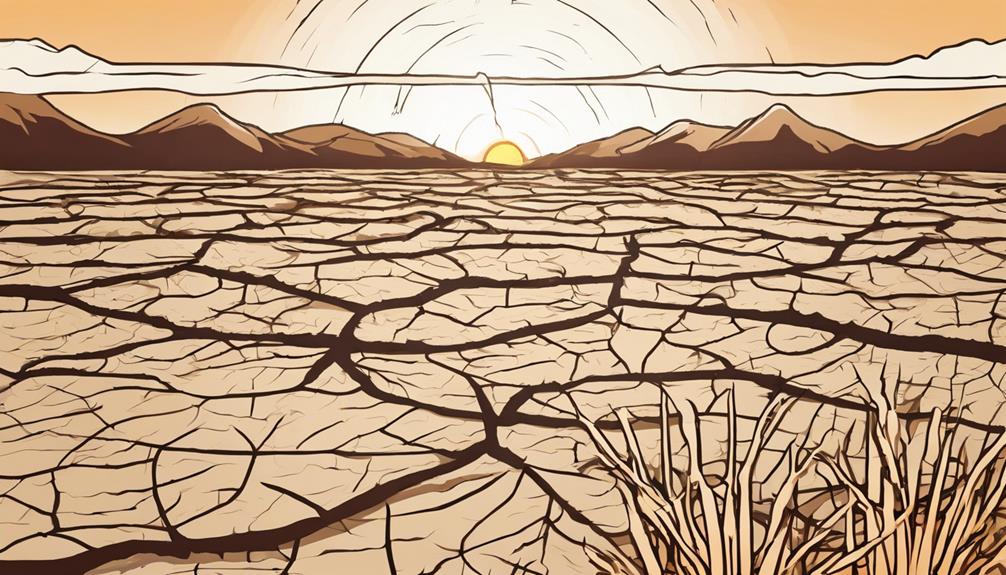
Droughts pose significant environmental challenges, leading to increased stress on ecosystems, concerns about water scarcity, and reductions in agricultural yields. The impact of drought extends beyond water availability, affecting the overall health and balance of natural systems. Understanding these environmental consequences is crucial for developing effective strategies to mitigate the effects of drought on ecosystems and water resources.
Ecosystem Stress From Drought
Ecosystem stress during periods of drought manifests in various forms due to the reduced water availability, impacting soil moisture levels and vegetation growth.
Impacts of Ecosystem Stress from Drought:
- Decreased Soil Moisture: Limited water availability leads to dry soils, affecting nutrient availability and root growth.
- Reduced Vegetation Growth: Drought conditions hinder photosynthesis and plant development, leading to decreased vegetation cover.
- Increased Competition: Plant and animal species compete for the limited water resources available, affecting biodiversity and ecosystem balance.
These effects highlight the complex interactions within ecosystems during droughts, underscoring the need for sustainable water resource management to mitigate the impact of drought on ecosystem health and functioning.
Water Scarcity Concerns
How does water scarcity, exacerbated by prolonged drought conditions, impact the environment and its delicate ecological balance? Water scarcity, worsened by drought, significantly affects the quality and availability of water, posing a threat to ecosystems. In the United States, where groundwater is a crucial water source, droughts raise concerns about water scarcity. The decrease in precipitation during droughts leads to reduced groundwater replenishment, further exacerbating the water scarcity issue. Additionally, drought-induced wildfires contribute to water quality degradation by introducing pollutants like sediment and ash into water bodies. The rise in water temperatures during droughts also lowers oxygen levels in lakes and reservoirs, adversely affecting aquatic life. These combined effects emphasize the critical need for sustainable water management strategies to mitigate the environmental impacts of water scarcity during droughts.
| Water Scarcity Impacts | Description |
|---|---|
| Reduced stream and river flows | Increases pollutant concentration in water bodies |
| Higher water temperatures | Reduces oxygen levels, impacting aquatic life |
| Wildfires during droughts | Contribute sediment, ash, and debris, affecting water quality |
| Groundwater supplies | Not replenished, impacting water availability |
Agricultural Yield Reductions
The agricultural sector faces substantial challenges during periods of drought, particularly in terms of reduced yields and productivity. Droughts can lead to significant agricultural yield reductions, with crop failures and lower productivity impacting food supply. The reduced water availability during droughts hinders irrigation, affecting crop growth and leading to lower yields. Additionally, drought-induced soil moisture deficits can cause stress to crops, resulting in stunted growth and reduced harvests. Livestock farming also suffers during droughts due to limited forage availability, leading to lower production and economic losses. The environmental impact of drought on agriculture includes decreased crop quality, increased susceptibility to pests and diseases, and long-term soil degradation.
Economic Consequences of Drought
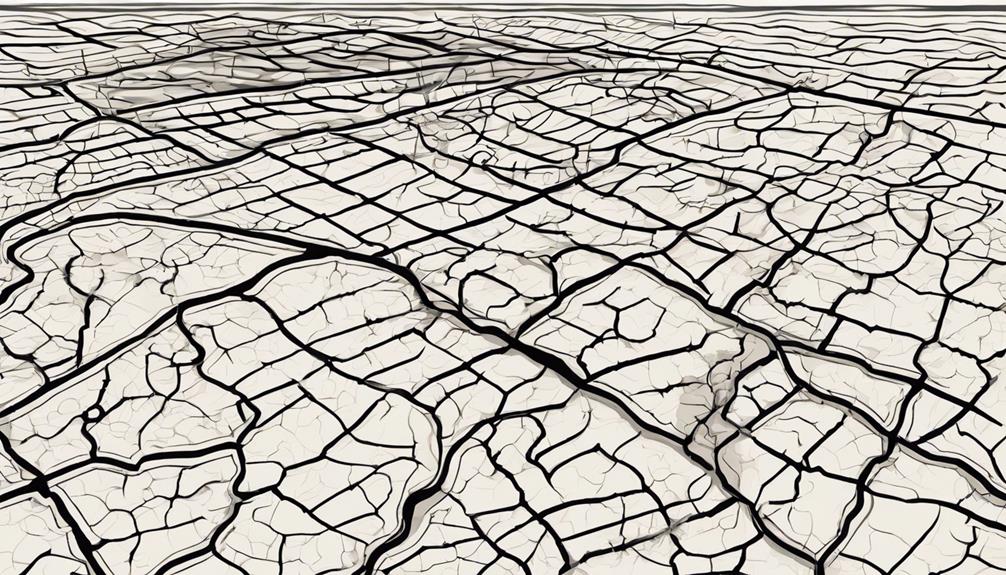
What are the economic ramifications of drought conditions on agriculture and related industries? Droughts have severe economic impacts, leading to substantial financial burdens for individuals and businesses. Agricultural losses are a significant consequence of drought, affecting farmers, ranchers, and related industries. Farmers face financial losses from destroyed crops, while ranchers incur increased costs for animal care and feed due to water scarcity. Additionally, businesses suffer setbacks due to crop damage caused by drought conditions. Power companies may also be compelled to invest more in alternative fuel sources to compensate for the effects of drought on energy production. Overall, the economic consequences of drought are far-reaching and can have lasting effects on the economy.
| Category | Impact |
|---|---|
| Agriculture | Financial losses from destroyed crops |
| Ranching | Increased costs for animal care and feed |
| Businesses | Financial setbacks due to crop damage |
Drought in Agriculture
Amidst the economic ramifications of drought conditions on agriculture and related industries, the impact of drought in agriculture manifests through crop failures, diminished food supplies, and compromised livestock health. The following are key ways in which drought affects agriculture:
- Crop Failures: Drought leads to water stress in plants, resulting in stunted growth, lower yields, and in severe cases, complete crop failure. This directly contributes to food shortages and reduced agricultural productivity.
- Diminished Food Supplies: Decreased crop yields during drought conditions lead to a scarcity of food in the market. This scarcity can drive up food prices, making essential food items less accessible to consumers.
- Compromised Livestock Health: Water scarcity and limited forage availability during drought impact the health and well-being of livestock. Malnutrition, diseases, and even death can occur, posing significant challenges to farmers and the livestock industry as a whole.
The interplay of these factors underscores the severe implications of drought on agriculture, water supply, and ultimately, food prices.
Drought Resilience Strategies
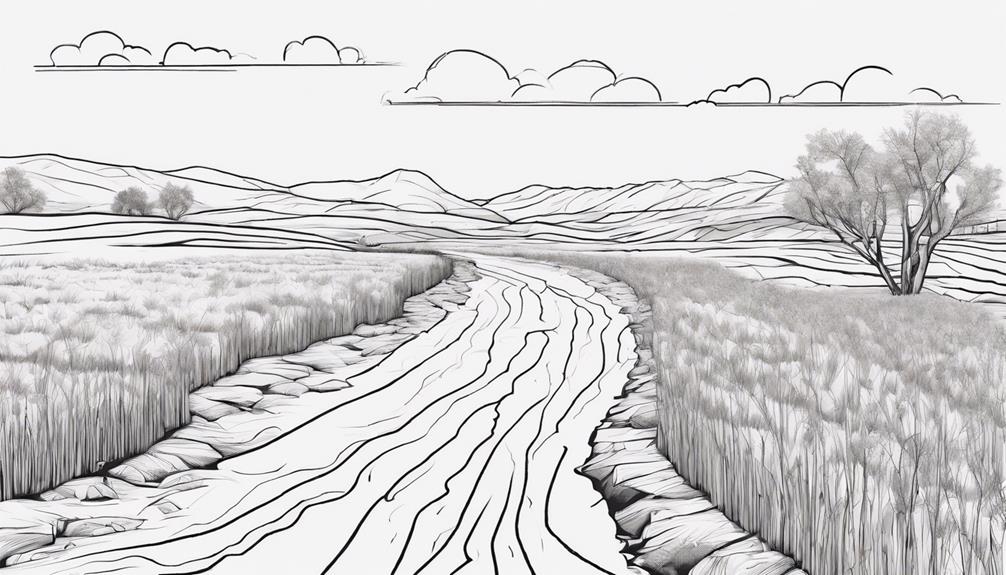
In addressing the challenge of drought, implementing effective resilience strategies is paramount for ensuring the sustainability of agricultural systems and water resources. Water conservation measures play a crucial role in enhancing resilience during drought periods. Strategies such as reducing water usage, adopting efficient irrigation techniques, and implementing technologies like drip irrigation can significantly contribute to conserving water resources. Additionally, cultivating drought-resistant crops and employing practices like mulching can bolster agricultural resilience by enabling crops to better withstand water scarcity.
Furthermore, the development of alternative water sources is essential for building resilience against drought. Techniques like rainwater harvesting and greywater recycling provide supplementary water sources that can alleviate the strain on traditional water supplies during dry spells. Moreover, investing in water infrastructure such as dams, reservoirs, and water recycling plants can help mitigate the impact of drought by ensuring a more reliable water supply.
Education also plays a vital role in enhancing drought resilience. Informing communities about drought preparedness, early warning systems, and emergency response plans is critical for improving readiness and response capabilities in the face of water scarcity challenges.
Global Drought Hotspots
Global Drought Hotspots present critical challenges for regions like East Africa, where severe water scarcity exacerbates food insecurity and threatens the livelihoods of millions. The impact of drought events in these regions is exacerbated by factors such as global warming, leading to more frequent and intense water shortages. Here are key points to consider:
- East African Countries: Somalia, Kenya, and Ethiopia are among the severe global drought hotspots, with over 40 million people in East Africa currently affected by ongoing drought conditions.
- Humanitarian Crisis: Somalia, in particular, is facing near-famine conditions, putting millions at risk of hunger due to the prolonged drought. This underscores the urgent need for international aid and long-term sustainable solutions.
- Vulnerability of Developing Countries: Developing nations with high agricultural populations are especially vulnerable to the impacts of drought, highlighting the importance of resilience-building efforts and adaptive strategies in these regions. Addressing the root causes of drought events, including climate change, is crucial in mitigating their devastating effects on vulnerable populations worldwide.
Frequently Asked Questions
What Is a Drought and How Does It Affect You?
Drought, characterized by prolonged periods of low precipitation, significantly impacts individuals and communities. It leads to agricultural impacts such as crop failures and food shortages, while health consequences include disease outbreaks due to the lack of clean water. Environmental repercussions manifest in wildfires, air quality issues, and conflicts over scarce resources. These effects collectively highlight the wide-ranging and severe implications of drought on various aspects of society.
How Do Droughts Affect the US Economy?
Droughts significantly impact the US economy through agricultural devastation, leading to supply chain disruptions and increased food prices. These events result in financial strain for businesses dependent on agriculture, contributing to job losses and economic consequences. The ripple effects of drought-related challenges extend beyond the agricultural sector, affecting employment rates and overall economic growth. Mitigating these impacts requires strategic planning and investment in drought resilience measures to safeguard the economy.
How Does Drought Affect Short Term?
In the short term, drought adversely affects crop yield by hindering germination and growth due to reduced soil moisture levels. Livestock health suffers as water sources become limited, impacting their access to hydration. Consequently, food prices may escalate due to reduced crop output and increased demand for livestock feed. These combined effects can strain agricultural productivity and disrupt supply chains, ultimately impacting the economy and food security.
How Does Drought Affect the Amount of Water People Use?
During droughts, the scarcity of water resources prompts individuals to engage in water conservation practices and modify their behaviors. Water conservation efforts increase as people limit non-essential water usage, leading to a reduction in overall water consumption. Agricultural impacts result from limited water availability, affecting food production. Water shortages strain infrastructure, necessitating the implementation of measures to address the stress on water systems and ensure sustainable water management practices.
Conclusion
In conclusion, drought is a significant natural disaster that has far-reaching impacts on both humans and the environment. It is caused by various factors such as climate change and deforestation, leading to severe water shortages and economic losses. Implementing effective mitigation strategies and building drought resilience are crucial in addressing this issue. The global community must work together to combat the devastating effects of drought, as its impact can be as catastrophic as a thousand thunderstorms combined.
